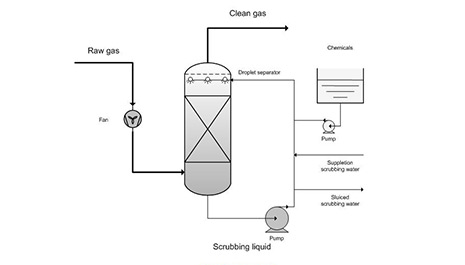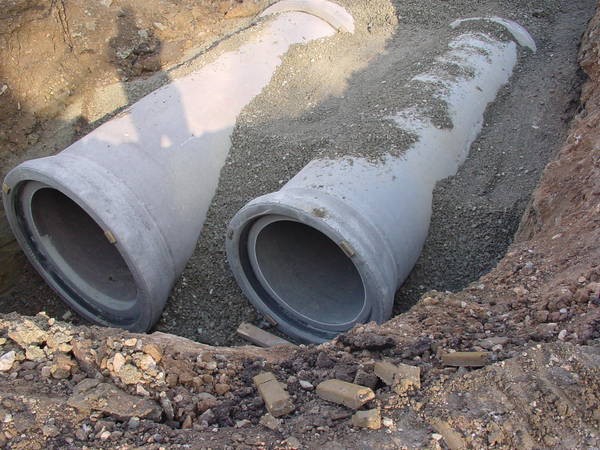What Is MBBR?
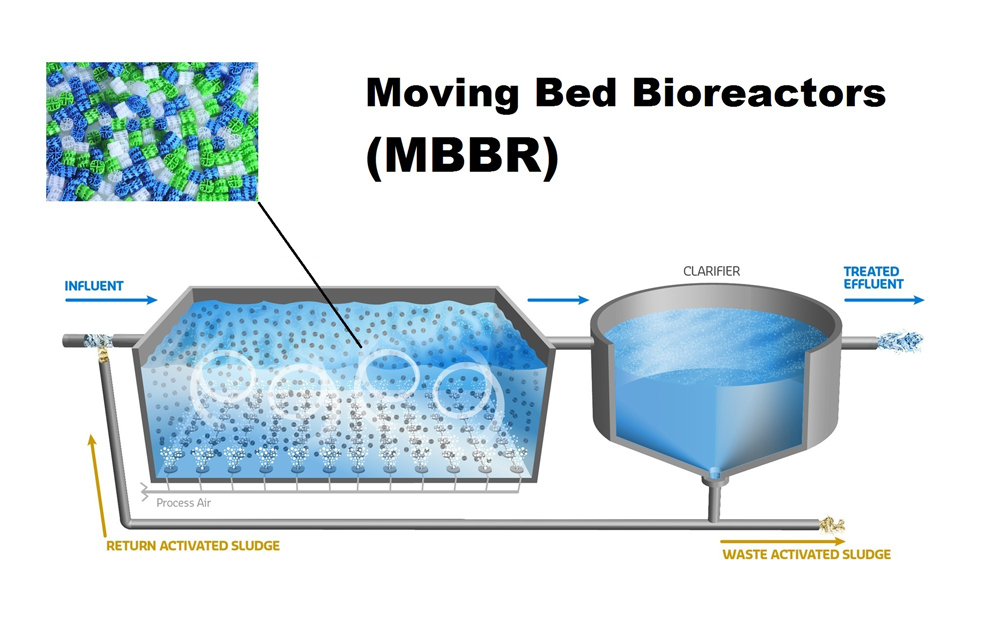
MBBR which is commonly known as moving bed biofilm reactor is a modern water treatment technology and process. It was first invented in the late 1980s by Professor Hallvard of the Norwegian University of science and technology.
Unlike most traditional water wastage treatment systems, MBBR is a highly effective biological water treatment process that is based on a combination of biofilm media and conventional activated sludge processes. This way, water can be treated in both anaerobic and aerobic environments.
MBBR is currently the best water treatment solution for high-strength water systems. This is mainly because of the biological nitrogen removal (BNR), which uses MBBR systems thus improving waste matter quality and increasing treatment capacity with no extra footprint growth. And you can use K1 media and MBBR media to improve water quality in MBBR systems.
The MBBR process is also made more perfect by the use of MBR (Membrane Bioreactor). This process is widely used for industrial and municipal wastewater treatment process.
So how does the MBBR work?
Unlike the polishing process, the MBR is used as a tertiary water treatment step that has no return of active biomass to the biological process. Currently, most MBR processes in commercial places today make use of the membrane as a filter which rejects all solid materials developed in the natural process.
This helps result in a disinfected and clarified product effluent.
MBR also uses low-pressure microfiltration and ultrafiltration in the process of wastewater treatment. The membrane used in the process also helps ensure that there are no gravity settling solids after the process which is the case with conventional clarifiers.
The MBR level of filtration allows high-quality effluent through the membrane thus eliminating the sedimentation. This explains why filtration is a critical process during the MBR.
The MBBR technology also has enhanced processing stability not to mention high suspended biomass operation. This will help ensure the perfection and accuracy of the wastewater treatment process by using the MBBR technology.
MBBR design (moving bed biofilm reactor design)
For you to get the best out of the MBBR process, using the best model is paramount. However, with the right procedure to follow, you do not need an expert to help you in the design process of the MBBR.
The first step when it comes to MBBR design is to understand the discharge charges in your state. This is especially when you are designing the MBBR water treatment plant to meet the regulatory norm.
You can get these from the various MBBR design parameters or books that you may decide to use.
Additionally, in case you intend to reuse the water after waste treatment, you need to familiarize yourself with the standards required for one to re-use treated sewage water. For instance, for chores such as irrigation, you may not expect a high standard is reusing.
However, other tasks such as automobile or toilet flushing will require high standards.
In case you need a water treatment plant to help prevent lousy smell and do not intend to reuse the water, then a central water treatment plant would be enough. However, you also need to follow the right standards in this one too to ensure that you get the get the best results from your investment.
When thinking about the MBBR design criteria, one of the main things that you should have in mind is the MBBR design calculations. Different plants will have different design calculations since sewage characteristics differ depending on the source of the sewage.
This means that you need to consider several factors to ensure that you make the right design calculations. For instance, educational institutions do not have as much BOD waste as compared to BOD sewage in IT buildings or commercial places.
Additionally, the norm for sewage from homes is about BOD 300 PPM.
When making the MBBR design calculations, you should also remember the three MBBR functions or calculations. These include:
- i.Single stage BOD removal
- ii.Two-stage BOD removal
- iii.Separate stage nitrification
These MBBR functions will help you calculate the best tank volume for the process, and air or oxygen requirement for there to be a coarse bubble aerations system.
However, this should all be based on carrier characteristics, aeration system characteristics, and wastewater characteristics.
MBBR Filter Technology
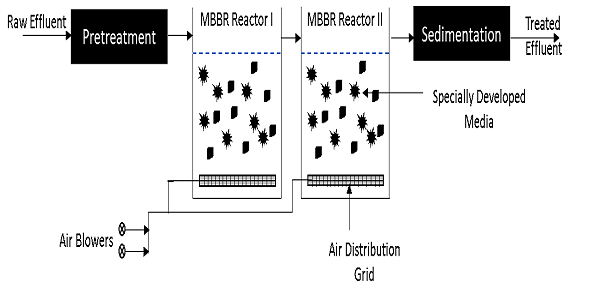
Ideally, the MBBR process is known to improve reliability, simplify the operation and process not to mention the fact that it requires a smaller storage space compared to traditional sewage treatment plants. For this reason, there is a well-managed technology behind the MBBR process to help ensure this becomes possible.
The technology involved during the MBBR process uses thousands of polyethylene biofilm carriers. These carriers operate within an aerated mixed wastewater treatment basin in a combined motion.
Each carrier provides a protected carrier which helps in the help in the growth of autotrophic and heterotrophic bacteria within the cells. This technology helps increase productivity and effectiveness of the process.
The high population of bacteria helps achieve a high rate of biodegradation within the system and also provides ease of operation, not to mention the reliability of the process.
The MBBR process also has an optimum level of productive biofilm which makes the process and the technology cost-effective and easy to maintain. There is also the biofilm which is attached to the mobile carriers found within the system which automatically responds to load fluctuations.
Like in any other situation, the MBBR technology has both its bright sides and the dark sides too. For instance, one of the most significant advantages of MBBR technology is that it can be used in already existing tanks.
This means that you do not need new tanks when you intend to introduce the MBBR process in your home or institution. All you have to do is call us when you need the MBBR system, and we shall help you achieve your goal with what you already have.
However, the MBBR technology also has its negative side. For instance, you will need to have basic sewage plants for you to be in a position to operate and coordinate MBBR sewage water treatment.
MBBR Filter Media Working Principle
After successfully installing the MBBR system, you need to understand its working principle for you to get the best out of it. Luckily, the MBBR system has a simple working principle that anyone can easily understand.
For one the MBBR system has activated sludge aeration systems in which case the sludge is collected on the recycled plastic carriers. These carriers named K1 media have a large surface for air, bacteria and contact water.
The activated sludge, which is also the bacteria grows on the internal surface of the carriers. This way, organic matter from the wastewater is broken down by the bacteria.
The excess sludge with then come separate from the carriers and will then flow with the treated water towards the final separator.
This will also help eliminate the extra amount of bacteria growth.
Additionally, depending on the specific demands, the system can have one stage or more stage system. The primary bacteria of the process remain in their own duty tank since the carriers remain only in one tank.
Screens Usually Protect This Tank.
Depending on the discharge regulations and quality of the wastewater, the MBBR process can be used for different applications to help give the desired results. Some of the standard industrial applications of the MBBR system include:
- Fast recovery from process upsets
- Limited footprint
- Capacity increase
- Quality improvement – nitrogen and BOD removal
- Minimize operator attention and process complexity
- Future expansion
Additionally, there are also several benefits that you enjoy through the use of the MBBR process. Some of these include:
- Maintenance friendly
- Simple to extend
- Financial saving on discharge costs
- High volume load
- Economically attractive
- Compact; that is saved on the space that is used in for storage
The characteristic of the biofilm establishing on the carrier surface is not only influenced by the composition and loads of the pollutants in the wastewater (substrate) but also by the shear forces in the tank. This helps ensure that the MBBR process has constant biological removal rates and reliable process stability.
MBBR Process
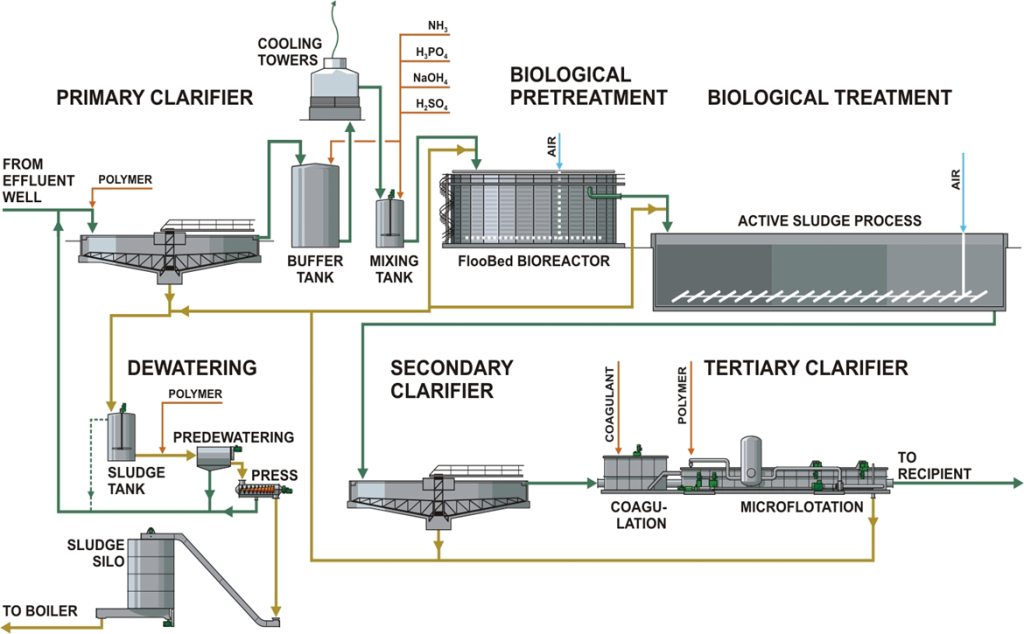
A sensitive factor in the (MBBR) process is the adequate and frequent contact between the microorganisms attached to the carrier and biofilm wastewater components. The aerobic treatment process can be used to achieve the necessary mixing of the carrier elements in the reaction tank.
The quality and characteristics of the biofilm which is seen on the carrier surface are influenced by not only shear forces in the tank but also by the loads and components of the pollutants in the wastewater (substrate). The quicker and the more intense the growth of biomass, more the wastewater is polluted with biodegradable contaminants,
Easy to install. Their installation procedure is not complicated.
The carriers which are found in the reaction tank can be appropriately moved by pumping water through an anaerobic treatment process or by using immersed slowly-rotating mixers.
Consequently, they will be thin since they are protected from the shear forces from inside the pores. It is essential, however, to remember that the oxygen required for the aerobic biodegradation processes and the thin biofilms are crucial for an optimal supply of the microorganisms with substrates (removable pollutants and nutrients).
Problems caused by a reduction in biodegradation efficiency are mainly due to the biofilms' thickness, which reduces the active carrier surface area. Luckily, this issue is not present in the MBBR Biochip 25.
Its process also differs in that the biofilms, which try to grow out of the pores and colonize the pores of the Biochip, are ensured that they remain thin by the shear forces. For this reason, the MBBR Biochip allows for consistently high biological removal rates and reliable process stability.
Why Do I Need MBBR?
Deally, in every home or institution, there is sewage that needs to be taken care of. However, though there are many sewage process plants that one can use, it is most advisable to use the MBBR technology.
So, why do we recommend do you need the MBBR technology?
First, MBBR is a highly effective biological treatment process. Additionally, the treatment process can be both anaerobic and aerobic and operates at high volume loads.
In addition, the MBBR technology has many advantages that those who are using it talk about. Some of the benefits of the MBBR technology include:
- Increased treatment capacity
- Low head loss
- No filter channeling
- No need for periodic backwashing
- Reduced sludge protection and no problems with sludge bulking
- Compact units with small size
- Improved settling characteristics
- Operation at higher suspended biomass
- Enhanced process stability
The MBBR process can also be used in various industries to give promising results. Some of these industries are such as:
- i.Automotive industries
- ii.Chemical industries
- iii.Food and beverage
- iv.Beverage factories
- v.Container units on a small footprint
- vi.Metal plating and finishing
- vii.Municipal sewage plants
- viii.Coke and steel plants, among others
Another reason why you need the MBBR technology is that it is cheap to acquire and maintain. This way, you never leave your wallet empty through the implementation of the MBBR process.
Having wastewater around is not only uncomfortable but also a health hazard. For this reason, one needs a process through which they can ensure that all the water around is well treated.
Conclusion
Consider the information above to see more about MBBR and why it is the best water treatment plan to invest in.








